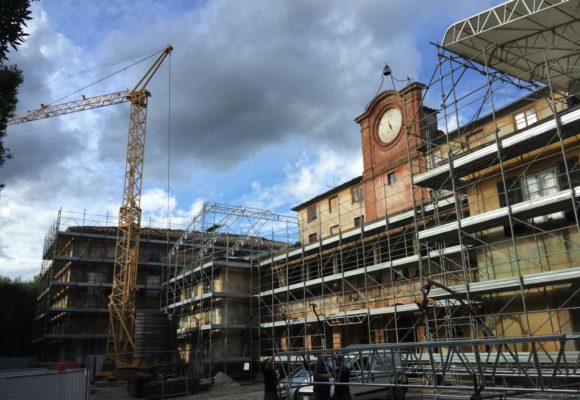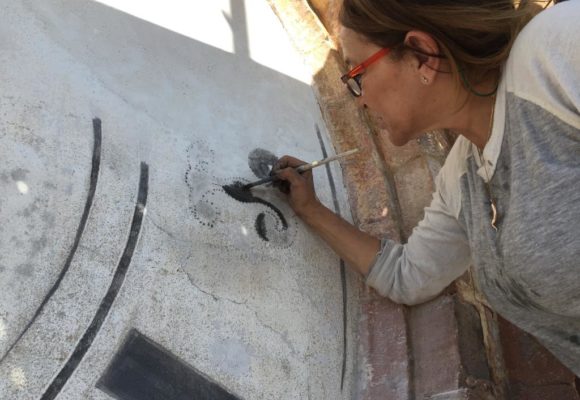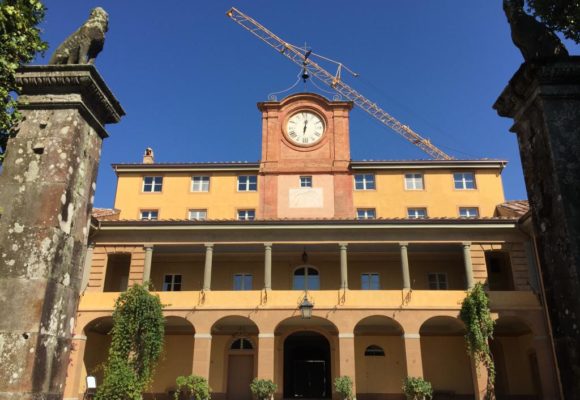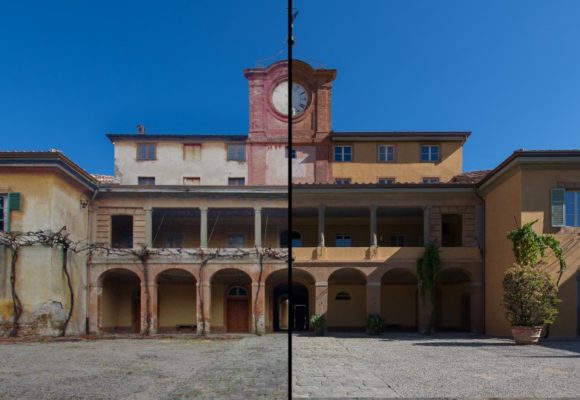The Clock House is an integral part of Villa Reale. Designed and developed as the Lodge of the Villa, it housed kitchens, stables, storerooms, other service areas and guest rooms.
Brief History of the Clock House
The building takes its name from the imposing six-hour clock (typical of the 17th century) located on the main, south-facing façade. It was installed by the Buonvisi and fitted with a mechanism by the Orsetti family in 1655, shortly after they took ownership of the estate.
The building has always been connected to the villa by a subterranean tunnel, allowing staff to bring meals back and forth without walking between the buildings in the open air. Both its positioning and formation are interesting. It is located unusually close to the main villa, and has a layout consisting of a central building unit with additional buildings encircling an internal space.
The central building features a double-level loggia, from which a magnificent view of the villa and park can be enjoyed – even if partially obscured by lush greenery.
It has access both from behind (providing a separate service entrance) and from the front via the long central section, conveniently connecting it to the Pecci-Blunt Chapel.
Works on the Clock House
The restoration of the Clock House has been carried out with the same meticulous research as that for the restoration of Villa Reale, using documentation and resources which it is linked to.
Largely based on significant, still-visible traces on the façades, the last colour scheme of the building has been restored, maintaining its close visual links with Villa Reale. The central building is brighter and lighter, featuring a superior ochre colour, while the surrounding buildings have a brick red hue, acting as a ‘frame’.
The work to restore the colour contrasts has highlighted the balance and elegance of the whole, clearly designed in a focused and organic way.
Particular care has been taken over the finishes, for example:
- The quality of the plasterwork and paint
- The cornice work
- The shaped terracotta roof overhands
- The clock and the original mechanism
- The section at the top of the turret: the cross, weathervane, the sphere and the original hammer – which keeps time as it did in 1655.
The original parts of the clock will be conserved within the Villa’s museum, with the exception of the bell, on which you can still see the inscription: Orsetti MDCLV – one of the many valuable testaments to the estate’s history.





